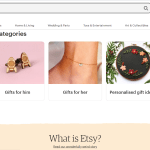Introduction.
In the digital jungle, where apps sprout like vines and websites shimmer like exotic flowers, one question remains ever-present: what makes a good digital product? Is it a sleek design, cutting-edge tech, or maybe a catchy jingle?
Well, like a master gardener tending to their prized orchid, crafting a stellar digital product requires more than just flashy features.
It’s a delicate dance between understanding user needs, weaving in user-friendliness, and nourishing with a sprinkle of innovation.
We’ll delve deeper into each element, offering practical tips and insightful examples to help you cultivate a digital product that thrives, leaving your users delighted and your success blooming bright.
Are you ready to shed light on your digital creativity and cultivate a product that truly shines? Let’s get started!
What Makes a Good Digital Product?
Creating a successful digital product necessitates a keen understanding of market needs, user preferences, technological advancements, and design principles.
This article elucidates the essential attributes and characteristics that distinguish a good digital product from its counterparts, guiding creators, entrepreneurs, and businesses in their pursuit of excellence.
1. Clear Value Proposition.
A good digital product addresses a specific need, solves a problem, or fulfils a desire for its target audience. Establish a clear value proposition by:
- Identifying Pain Points: Conduct market research, user interviews, and surveys to identify prevalent challenges, gaps, or inefficiencies within your target market.
- Offering Solutions: Develop features, functionalities, or capabilities that directly address identified pain points, providing tangible benefits, efficiencies, or enhancements for users.
2. User-Centric Design.
Prioritize user experience (UX) and user interface (UI) design principles to create intuitive, accessible, and engaging digital products:
- Intuitive Navigation: Design intuitive navigation pathways, menus, and interfaces that facilitate seamless user interactions, accessibility, and usability.
- Responsive Design: Ensure responsive design compatibility across various devices, screen sizes, browsers, and platforms to optimize accessibility and user experience.
- Feedback and Iteration: Incorporate user feedback, analytics, and testing methodologies to refine design elements, enhance functionality, and improve overall user satisfaction.
3. High-Quality Content and Functionality.
Deliver high-quality content, features, and functionalities that align with user expectations, industry standards, and technological capabilities:
- Content Relevance: Create compelling, informative, and valuable content that resonates with your target audience’s interests, preferences, and needs.
- Performance Optimization: Optimize performance, loading times, and responsiveness through efficient coding, caching mechanisms, and server configurations to ensure seamless user experiences.
- Security and Compliance: Implement robust security measures, data encryption, and compliance protocols to safeguard user information, transactions, and privacy rights.
4. Scalability and Flexibility.
Design digital products with scalability, adaptability, and flexibility in mind to accommodate growth, technological advancements, and evolving market dynamics:
- Modular Architecture: Adopt a modular architecture, component-based design, or microservices approach to facilitate scalability, maintainability, and extensibility.
- Integration Capabilities: Ensure seamless integration with third-party platforms, APIs, tools, or services to enhance functionality, interoperability, and user value.
- Customization Options: Provide customization options, settings, or configurations that empower users to tailor experiences, preferences, or functionalities according to their unique needs and preferences.
5. Effective Marketing and Distribution Strategies.
Promote, distribute, and monetize your digital product effectively through strategic marketing, distribution, and partnership initiatives:
- Targeted Marketing: Develop targeted marketing campaigns, content strategies, and promotional activities to reach, engage, and convert your ideal customers.
- Distribution Channels: Leverage multiple distribution channels, platforms, or marketplaces to expand reach, accessibility, and discoverability across diverse audiences and markets.
- Monetization Models: Implement diverse monetization models, such as subscription-based, freemium, one-time purchases, or licensing arrangements, aligned with user preferences, market trends, and value propositions.
Conclusion.
Creating a good digital product necessitates a holistic approach encompassing user-centric design, clear value proposition, high-quality content, scalability, and effective marketing strategies.
Embrace creativity, innovation, and user empowerment to craft digital products that inspire, captivate, and deliver unparalleled value in today’s dynamic and evolving digital ecosystem.






GIPHY App Key not set. Please check settings